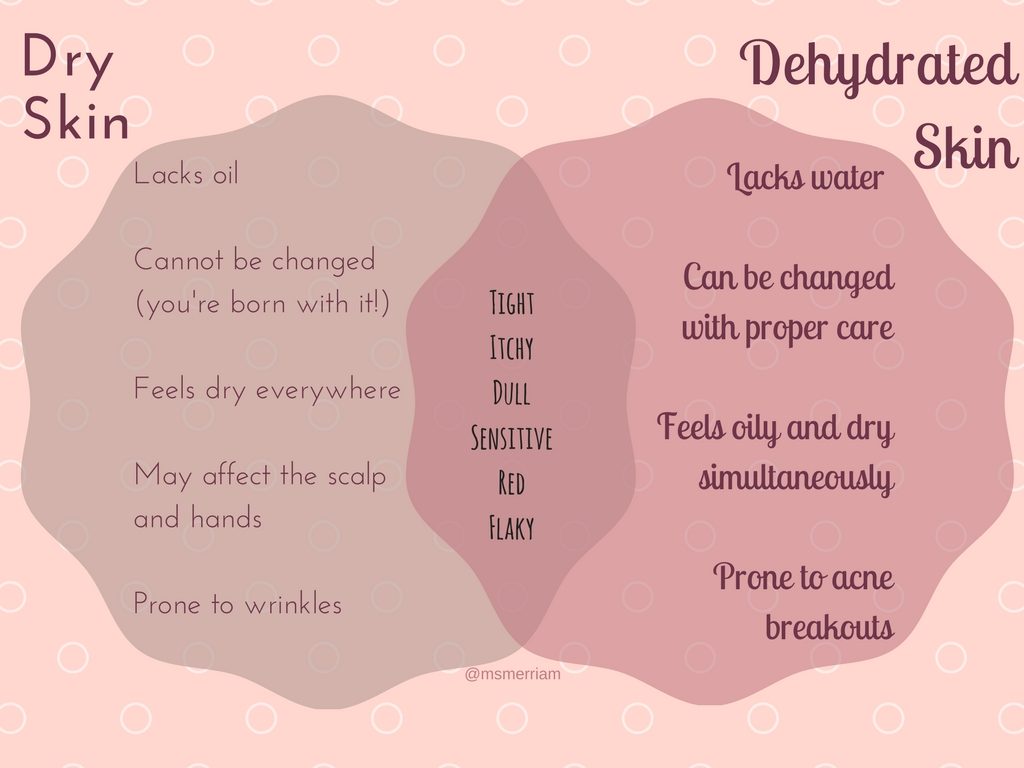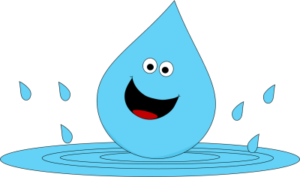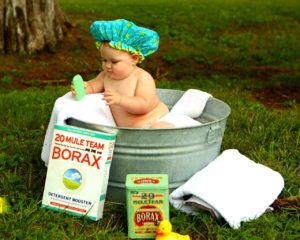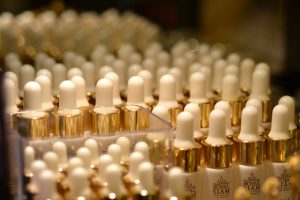I’m going to drop a serious knowledge bomb on you today.
Are you ready?
Just because your skin feels dry, doesn’t mean it actually IS dry.

Sit back. Let that sink in.
Now you’re probably thinking, “Well if my skin isn’t dry even though I think it’s dry, then what the hell is going on?”
The answer is dehydration! Because there is a lot of overlap between dryness and dehydration, these things usually get lumped together and treated the same. If you’ve ever bathed yourself in moisturizer before bed and woke up the next morning with a face that was somehow flaky AND oily, congrats friend. Your skin is probably dehydrated.
To make things even more exciting, your skin can potentially be dry and also dehydrated.
Related reading: How to Determine Your Skin Type
Why? Well we’ve clearly angered the Skincare Gods in some fashion.
But it’s also because dryness is a lifelong skin type, whereas dehydration is a condition that may or may not stick around forever.
Don’t worry! This whole post is going to explain how to tell if your skin is dry, dehydrated or both, and I’m going to give you some tips on how to manage dryness and minimize dehydration.
A Quick Vocabulary Lesson
(They don’t call me Ms. Merriam for nothing!)
I mentioned earlier that dryness is a skin TYPE and dehydration is a skin CONDITION.
Skin types are what you are born with. Skin conditions can come and go, and a ton of factors can impact them – stress, lifestyle, diet, environment, genetics, etc.
You cannot change your skin type. You can only manage it and keep your skin healthy to minimize whatever drawbacks your particular skin type has.
You CAN change your skin conditions. This means that if you’re one of the lucky ones who is dry and dehydrated, you can at least potentially get rid of one of these annoying issues.
See? Quick! Now on to the stuff you came here for!
Dry vs. Dehydrated: How Do I Tell?
Since there’s quite a bit of overlap in terms of physical signs, I’ve made this handy little infographic to help make things easier to remember:

Dry Skin
The main thing to remember about dry skin is that it lacks oil. This is why it often feels or looks thin, papery and dull.
When your skin is dry, it just means that your body does not produce enough natural oils to give your skin that bouncy, healthy glow we all want. Luckily, you can apply certain oils topically that mimic your skin’s natural oil production. It won’t get rid of your skin’s inherent dryness, but it will make it look much happier and healthier.
Dehydrated Skin
If your skin is dehydrated, it lacks water. While drinking enough water is definitely good for you and can improve how your skin looks, it doesn’t actually solve the dehydration issue. This is because your skin is the very last organ to receive any of the good things you put into your body, water included.
Drinking water is great, but it won’t solve your dehydrated skin issues. In fact, your skin will barely get any of that water at all.
The problem of dehydration usually comes from what’s called transepidermal water loss (TEWL if you’re kewl! …I-I’m sorry…I couldn’t help myself.)

In plain English, that just means that you’re losing too much moisture through your skin. Again, there are a gazillion reasons this can happen, but what it typically boils down to is a compromised skin barrier. Explaining your skin’s natural barriers deserves a separate post, but just know that if your skin’s moisture barrier is damaged, it prevents your skin from being able to regulate its moisture levels.
Makes sense, right?
The good news is that even if your barrier is REKT, you can fix it and solve your dehydration problems! You just need the right products and some patience.
So What Do I Do?
Great question.
1. Put Down the Face Wash
First of all, resist the urge to wash your face too much, even if it feels greasy. That oil production is your body desperately trying to balance your skin out, so washing it off just triggers more oil production. It’s a vicious cycle.

For most people, a thorough cleanse in the evening is enough. This means oil cleanser or point makeup remover followed by a gel, foam or cream wash. If your face feels gross in the mornings, you can splash with lukewarm sink water and pat dry, or you can swipe a cotton pad of micellar water over your face for a gentle refresh.
(Disclaimer: I am NOT saying this is the only correct way to handle cleansing. Your face will not fall off if you wash it twice a day. This is just my recommendation for compromised skin. It’s gentle. It works. It worked great for me. If it doesn’t jive with you, that’s fine!)
2. Layer!
My top two favorite discoveries in my Asian beauty journey are cosmetically elegant sunscreens and LAYERS.
Yes, I know these things always existed, but I wasn’t introduced to them until I plunged down the AB rabbit hole.
You don’t need 12 products to layer. You can use as little as 2-4 products in as many layers as your skin needs. In general, it’s best to use watery products like hydrating toners if you’re going to be doing lots of layers, but this is something you’ll have to play around with on your own to decide what works best for you.

Using lots of thin layers instead of slathering on a single, heavy “one and done” moisturizer gives your skin the opportunity to absorb the product better. This means happier, healthier skin with only a minimal amount of fuss.
3. Trial and Error
Beyond those two steps, it mostly comes down to product selection.
For dry skin, you definitely need hydration, but you also need more than that. Dry skin needs lipids (fats), which typically come from ceramides, cholesterol and fatty acids found in plant oils. These fats “fill in” the weakened places in your moisture barrier to shore up its defenses and keep your skin looking glowy.
Dehydrated skin is a bit of a different beast. I can’t stress enough how much dehydrated skin will improve with watery layers sealed in with a light, occlusive moisturizer. Dehydrated skin needs water, so you need humectants, which draw water into your skin. Hyaluronic acid and its derivatives (like sodium hyaluronate) are the most common ones you’ll see.
We’ll talk more about specific products in another post, I promise!
I’ve thrown a lot at you today, so let me do a brief recap:
The Highlights:
Dry skin-
- lacks oil
- is forever
- mainly benefits from humectants and lipids
Dehydrated skin-
- lacks water
- is potentially not forever
- mainly benefits from humectants and layers